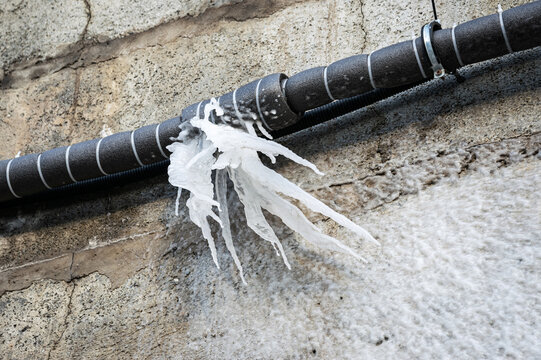Avoiding Frozen Plumbing: Best Tips for Cold Weather
Avoiding Frozen Plumbing: Best Tips for Cold Weather
Blog Article
On this page on the next paragraphs you will find a good deal of amazing information on the subject of How To Avoid Freezing Pipes.

Winter can wreak havoc on your plumbing, particularly by freezing pipes. Here's how to prevent it from taking place and what to do if it does.
Intro
As temperatures decline, the danger of icy pipelines boosts, potentially bring about pricey repair work and water damages. Comprehending exactly how to stop icy pipelines is crucial for property owners in chilly climates.
Prevention Tips
Insulating prone pipelines
Cover pipes in insulation sleeves or make use of heat tape to shield them from freezing temperatures. Concentrate on pipelines in unheated or outside areas of the home.
Home heating techniques
Maintain indoor areas sufficiently warmed, especially locations with pipes. Open closet doors to permit warm air to flow around pipelines under sinks.
How to recognize frozen pipelines
Try to find decreased water circulation from taps, unusual smells or noises from pipelines, and visible frost on subjected pipelines.
Long-Term Solutions
Structural adjustments
Take into consideration rerouting pipelines away from exterior wall surfaces or unheated areas. Include additional insulation to attics, basements, and crawl spaces.
Updating insulation
Invest in high-quality insulation for pipes, attic rooms, and walls. Correct insulation aids maintain consistent temperature levels and reduces the danger of frozen pipelines.
Securing Exterior Plumbing
Garden hose pipes and outdoor taps
Detach and drain pipes garden hoses before winter season. Install frost-proof faucets or cover outdoor taps with insulated caps.
Understanding Frozen Pipelines
What triggers pipelines to freeze?
Pipes freeze when exposed to temperature levels listed below 32 ° F (0 ° C) for expanded periods. As water inside the pipes freezes, it increases, taxing the pipeline wall surfaces and potentially creating them to rupture.
Threats and damages
Icy pipelines can result in water supply interruptions, home damages, and pricey repairs. Burst pipelines can flooding homes and create substantial structural damage.
Signs of Frozen Piping
Recognizing frozen pipes early can stop them from rupturing.
What to Do If Your Pipes Freeze
Immediate activities to take
If you presume frozen pipelines, maintain faucets open up to ease pressure as the ice thaws. Use a hairdryer or towels taken in hot water to thaw pipelines gradually.
Conclusion
Protecting against icy pipelines needs aggressive steps and fast reactions. By recognizing the causes, indications, and safety nets, homeowners can secure their plumbing throughout cold weather.
5 Ways to Prevent Frozen Pipes
Drain Outdoor Faucets and Disconnect Hoses
First, close the shut-off valve that controls the flow of water in the pipe to your outdoor faucet. Then, head outside to disconnect and drain your hose and open the outdoor faucet to allow the water to completely drain out of the line. Turn off the faucet when done. Finally, head back to the shut-off valve and drain the remaining water inside the pipe into a bucket or container. Additionally, if you have a home irrigation system, you should consider hiring an expert to clear the system of water each year.
Insulate Pipes
One of the best and most cost-effective methods for preventing frozen water pipes is to wrap your pipes with insulation. This is especially important for areas in your home that aren’t exposed to heat, such as an attic. We suggest using foam sleeves, which can typically be found at your local hardware store.
Keep Heat Running at 65
Your pipes are located inside your walls, and the temperature there is much colder than the rest of the house. To prevent your pipes from freezing, The Insurance Information Institute suggests that you keep your home heated to at least 65 degrees, even when traveling. You may want to invest in smart devices that can keep an eye on the temperature in your home while you’re away.
Leave Water Dripping
Moving water — even a small trickle — can prevent ice from forming inside your pipes. When freezing temps are imminent, start a drip of water from all faucets that serve exposed pipes. Leaving a few faucets running will also help relieve pressure inside the pipes and help prevent a rupture if the water inside freezes.
Open Cupboard Doors
Warm your kitchen and bathroom pipes by opening cupboards and vanities. You should also leave your interior doors ajar to help warm air circulate evenly throughout your home.
:strip_icc()/snow-outdoor-faucet-pipes-4af65d1e5e904fb1aa7bf74071fe5d89.jpg)
I found that content on 6 Ways to Prevent Frozen Pipes while browsing the internet. I beg you take a moment to share this post if you liked it. Thanks a bunch for being here. Return soon.
Call Today Report this page